For those that are trying to start a low-carb diet, it can be confusing at first to know which foods to eat and which to avoid.
This article presents a guide to each food category’s best (and worst) low-carb foods.
Low Carb Foods To Eat (and Avoid)
In the subheadings below, you can find information about some of the best (and worst) low-carb foods in various food categories.
Bread
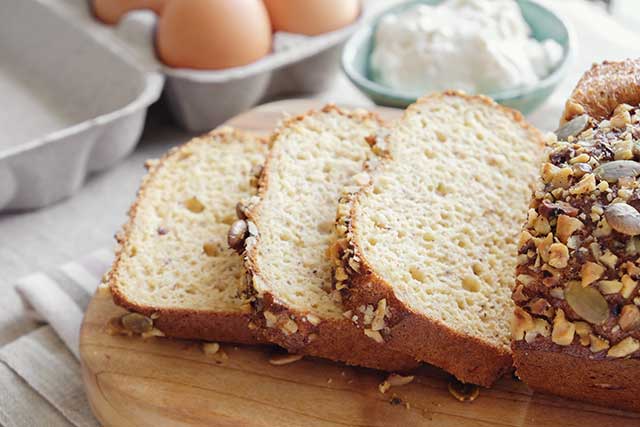
Bread, otherwise known as the ‘staff of life’, has been a popular staple in the Western world for centuries.
However, it isn’t really suitable for those trying to keep their carb intake down.
That said, there are some low-carb friendly bread options that use nut and seed flours.
The table below shows some of these options or you can find a complete guide to low-carb bread here.
| Five of the Best | Five To Avoid |
|---|---|
| Almond flour bread | Buns and rolls |
| Bread alternatives (wraps) | Garlic bread |
| Cloud bread | Naan bread |
| Coconut flour bread | White bread |
| Flaxseed bread | Whole grain bread |
Chocolate
Chocolate is delicious, and fortunately, it can fit into any low carb plan.
However, most of the commercially advertised chocolate bars are too high in sugar to be suitable.
The key here is to opt for some of the low-sugar options, and the “darker” the chocolate, the lower in carbs it will be.
| Five of the Best | Five To Avoid |
|---|---|
| 70% + dark chocolate (OK) | Chocolate desserts |
| 85% + dark chocolate (ideal) | Hot chocolate (sugar-sweetened) |
| Cocoa nibs | Milk chocolate |
| Hot chocolate (unsweetened) | Truffles |
| Hot chocolate (with a sweetener) | White chocolate |
Dairy
Firstly, the vast majority of dairy products are low-carb friendly, although the portion size can come into this.
For instance, milk has around 5 grams of carbohydrate per 100 grams, so a large intake can quickly become higher carb territory (1).
Other dairy products like butter, cheese, cream, and yogurt are all reasonably low in carbohydrate.
However, it is worth noting that some of the more processed options (like sweetened yogurts) can be extremely high in sugar.
Therefore, it is better to focus on minimally processed dairy foods.
| Five of the Best | Five To Avoid |
|---|---|
| Aged mature Cheddar | Condensed milk |
| Ghee | Ice-cream |
| Greek yogurt | Milk (in excessive amounts) |
| Heavy cream | Sweet cream |
| Ricotta cheese | Sweetened yogurt |
Desserts
Probably more than 95% of the world’s desserts are high in sugar and wheat flour. As a result, they are not really compatible with a low-carb diet.
However, some dessert options can be relatively low carb foods.
For instance, raspberries and cream taste delicious, and this tasty combination contains a minimal amount of carbohydrate. Raspberries provide little over 5 grams of net carbs per cup serving (2).
There is also a wide range of recipes that use low-carb flours and sugar alternatives for sweetening.
| Five of the Best | Five To Avoid |
|---|---|
| Berries and cream | Cakes |
| Cakes (sugar-free) | Candy |
| Cookies (sugar-free) | Cookies |
| Piece of fruit | Mousse |
| Yogurt | Pastries |
Dried Foods
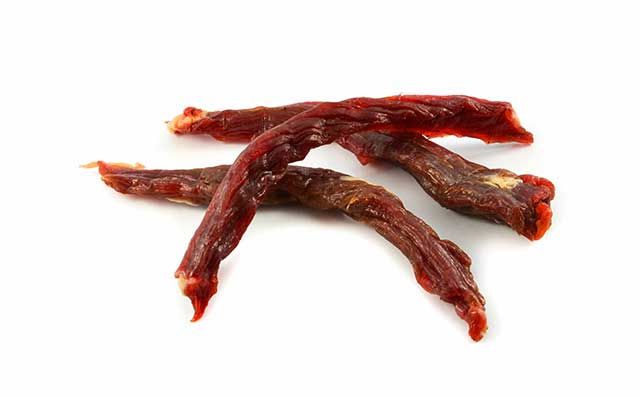
Dried foods are not altogether different from their fresh versions.
However, for foods such as fruits, the drying process removes the moisture and leaves concentrated sugars.
For this reason, dried fruit has (approximately) 5x more carbohydrate than fresh fruit of the same weight (3, 4).
As a result, it is better to limit dried fruit, but other dried foods such as jerky are perfectly fine.
| Five of the Best | Five To Avoid |
|---|---|
| Dried seafood | Beans |
| Dried mushrooms | Dates |
| Dried onion powder | Prunes |
| Dried red pepper | Raisins |
| Jerky / dried meat | Vegetable chips |
Drinks
The healthiest drink choice, regardless of diet, is water.
Whether someone is on a low or high carb diet, water should make up the bulk of our fluid intake.
However, there are several other drinks that are low-carb and possibly beneficial for our health. Some of the most popular of these are coffee and tea.
That said, be sure to opt for unsweetened versions because some cafe drink products can contain surprising amounts of sugar.
For instance, just one grande size Chai tea latte from Starbucks contains over 50 grams of carbohydrate and 47 grams of sugar (5).
| Five of the Best | Five To Avoid |
|---|---|
| Black tea | Beer |
| Coffee | Cola |
| Green tea | Fruit juice |
| Herbal tea | Lemonade |
| Water | Sweetened tea/coffee |
See this guide to the best (and worst) low-carb drink options for further information.
Eggs
Eggs contain under one gram of carbohydrate per egg (6).
In short; all eggs are great whether regular chicken eggs, quail eggs, or any other type of egg.
Fast Food
Most people think fast food is packed full of carbohydrates.
While this may have been true a decade ago, there are more and more lower-carb options available in fast food restaurants these days.
While cheeseburgers and pizzas are off the low-carb menu, a lettuce-wrap burger or a salad bowl should be no problem.
For a quick summary, here are some of the better (and worse) options for those wanting some low-carb fast food.
| Five of the Best | Five To Avoid |
|---|---|
| Beef patties | Cheeseburger |
| Burrito bowl | Chinese fried rice |
| Cheeseburger in a bowl | Curry and rice/naan |
| Lettuce-wrap burger | French fries |
| Subway salad bowl | Pizza |
For more ideas, this guide to low-carb fast food presents numerous examples of healthier fast food choices.
Fermented Foods
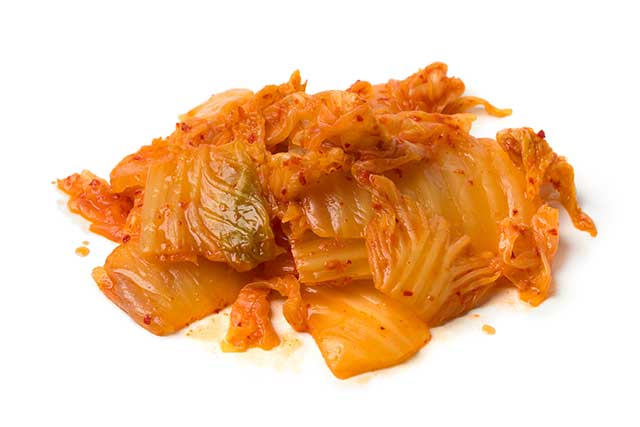
Fermented foods encompass some of the world’s most traditional foods such as cheese, kimchi, natto, sauerkraut, and wine.
While some of these are a little high in carbohydrate, the vast majority of fermented foods are low-carb friendly.
| Five of the Best | Five To Avoid |
|---|---|
| Cheese | Beer |
| Kimchi | Jiu Niang (fermented rice) |
| Low-carb kombucha | Sourdough bread |
| Sauerkraut | Sweet wine |
| (Dry) wine | Sweetened yogurt |
Fruits
It is worth pointing out that a low-carb diet can contain any fruit; it is the daily carb intake that matters the most.
However, there are certainly lower and higher carb options out there.
Some of the best choices include avocados, olives, and berries.
| Five of the Best | Five To Limit |
|---|---|
| Avocado | Banana |
| Blackberries | Cherries |
| Lemon | Grapes |
| Olives | Mango |
| Raspberries | Pineapple |
See this guide to low-carb fruits for a more in-depth look.
Meat
All varieties of meat are perfectly acceptable low-carb choices.
In some cases, some meat (usually bacon and cold cuts) may have a little bit of added sugar.
However, this sugar is present in such small amounts (<0.5%) that it is not worth worrying about.
Nuts
Nuts are all suitable for low-carb diets.
However, it is worth noting that certain nuts are a little higher in carbohydrate. These include cashew nuts and pistachios.
That being said, a typical serving (1-ounce/28-grams) of any nut does not provide a large amount of carbohydrate.
Therefore, most nuts should be OK for people unless they are trying to restrict carbohydrate intake to low amounts.
For reference, here is the ‘net carbohydrate’ content (total carbs minus fiber) of nuts per ounce serving;
- Almonds: 2.7 grams
- Brazil nuts: 1.3 grams
- Cashews: 8.3 grams
- Chestnuts: 13.4 grams
- Hazelnuts: 2.0 grams
- Macadamia: 1.6 grams
- Peanuts: 2.2 grams
- Pecans: 1.2 grams
- Pine nuts: 2.7 grams
- Pistachios: 4.9 grams
- Walnuts: 1.9 grams
Oils
All cooking fats and oils are a source of isolated fat, and they contain no carbs.
The “best” choice of cooking fat may depend on allergies (such as dairy or soy allergies), and one’s overall diet and personal goals. For instance, some people may wish to limit saturated fat intake to lower their LDL cholesterol levels.
Pasta and Noodles
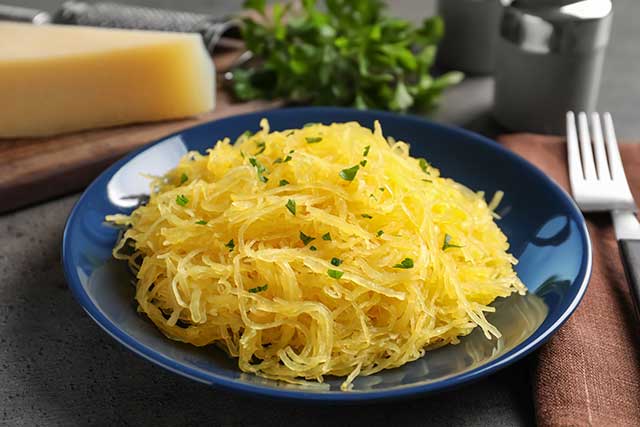
Italian and Asian based pasta and noodle dishes are popular all across the world.
On the negative side, pasta is one of the highest-carb foods around, so it isn’t a good fit for low-carb diets.
However, there are a variety of alternatives available, and some of them can work quite well.
| Five of the Best | Five To Avoid |
|---|---|
| Enoki “noodles” | Lasagna |
| Shirataki noodles | Rice noodles |
| Palmini noodles | Spaghetti |
| Spaghetti squash | Tagliatelle |
| Shirataki noodles | Udon noodles |
There are also numerous low-carb pasta alternatives.
Pastries and Pies
Pastries and pies are two more types of food that are not low-carb-friendly.
Since these foods all contain significant amounts of wheat flour, they are relatively high in carbohydrate.
However, it is possible to make homemade varieties that use low-carb flours.
| Five of the Best | Five To Avoid |
|---|---|
| Almond flour | Buckwheat flour |
| Coconut flour | Oat flour |
| Flaxseed meal | Rice flour |
| Macadamia flour | Rye flour |
| Psyllium husk | Wheat flour |
Salads
Salads work well on low-carb diets since they mostly emphasize sources of protein alongside nutrient-dense greens.
On the downside, some common salad dressings can be full of sugar (and cheap oils).
If you use these, be sure to factor in the carbohydrates (and calories) they contain.
You can find a few salad ideas in this list of 30 low-carb recipes.
Sandwiches
Since sandwiches tend to mean high-carb bread, these are not suitable for genuine low-carb diets.
However, it is possible to buy various low carb-breads (or make your own) using a low carb flour.
Seafood
Seafood includes some of the most nutrient-dense foods in the world.
From shellfish and oily fish to plant life such as seaweed, food from the sea has a lot of nutritional value.
Interestingly, shellfish do contain carbohydrate, but the amount is only several grams per 100g.
For anyone following an ultra-strict low-carb plan, then it may be worth factoring in these carbohydrates still.
Sugars
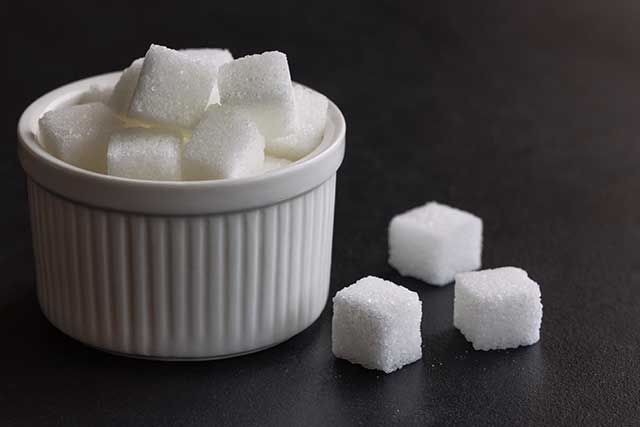
Quite clearly, sugar and low-carb diets don’t play well together.
Sugar is a concentrated source of carbohydrate, and it is hard to keep to a low-carb plan if consuming anything other than a small amount.
However, for those with a sweet tooth, there are various low-carb sweeteners that you can replace sugar with.
These options include artificial sweeteners like aspartame, sugar alcohols such as erythritol and xylitol, and plant extracts like stevia.
Vegetables
Not all vegetables are low carb foods, but pretty much every vegetable—including tubers—can fit into a low-carb diet.
However, this depends on precisely how low in carbs the particular diet is.
For a stringent ketogenic diet, tubers are just too high in carbohydrate.
For a more liberal (100 grams or so) low-carb diet, there is ample room for tubers and root vegetables.
| Five of the Best | Five To Limit |
|---|---|
| Broccoli | Casava |
| Cauliflower | Parsnips |
| Mushrooms | Potatoes |
| Spinach | Sweet potatoes |
| Zucchini | Yams |
See this list of vegetables low in carbohydrate for a deeper look.
Other
Aside from the above categories of food, packaged foods such as condiments and ready meals can be surprisingly high in carbs.
See this guide to low-carb diets and alcohol for those who like to drink socially.
You might also find these guides to low carb beer and low carb wine useful.
Final Thoughts
Lastly, it is worth remembering that just because a food is low in carbohydrates does not necessarily mean it is healthy.
Rather than judging food by the number of calories, carbs, or fat it has, it is the nutrient density that matters the most.

That was very helpful. I was wondering why you put canola as one if the oils to be avoided. Is it the smoke point??? The other thing i would like to ask is whether coconut oil is healthy. I believe it has healthy oils like Lauric, but it has a higher percentage of saturated fats. I have some coronary heart disease.
Thanks so much.
Thank you. The reason for Canola oil being on there is that it doesn’t appear to be very heat-stable. There was a recent study that looked into what happens when you heat various cooking oils. Oils such as coconut and olive oil were very stable at high temperatures. In contrast, Canola was one which displayed poor oxidative stability and formed larger amounts of trans fats and other oxidation products. The study was done by an independent lab, and you can see it here: https://actascientific.com/ASNH/pdf/ASNH-02-0083.pdf
As for your medical question on coconut oil, I would recommend discussing the pros and cons of this with your doctor who fully understands your medical condition/history.
If useful for that discussion, there was a recent randomized controlled trial which looked at how butter, coconut oil, and olive oil affect cardiovascular risk factors here: https://bmjopen.bmj.com/content/8/3/e020167
Low carb foods an important part of the shopping list for the 70% of us overweight ! Low Insulin output is the key!